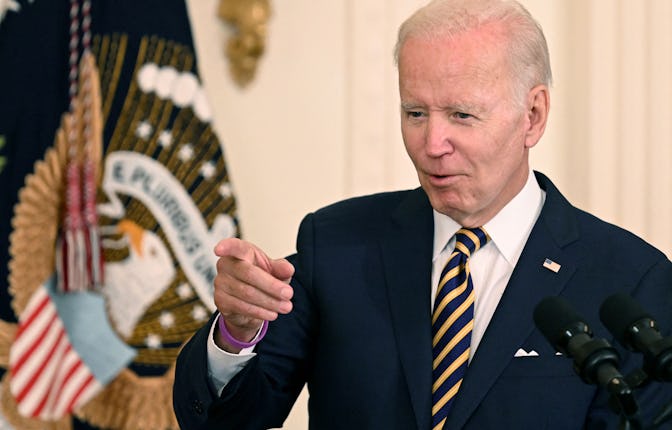It’s far from perfect, but Biden’s student debt relief plan is a big deal
Yes, there’s thousands in loan forgiveness, but the real meat of the plan might be the new income-driven repayments.

In the end, after months of speculation and agitation and organizing on the part of activists across the country, President Biden did not cancel student debt. At least, not exactly.
On Wednesday, Biden announced his long awaited Student Loan Relief Plan, ending one of the biggest open questions of his presidency to date: What will the White House do to address the more than $1.5 trillion owed by borrowers swamped by the astronomical costs of higher education in the United States? While the Biden plan is a far cry from the blanket debt forgiveness many had hoped for, it nevertheless offers a significant step forward for millions of people who have spent years — sometimes decades — crushed under the weight of their student loans.
“My dad’s greatest regret was that he never got to go to college," Biden explained as he opened his remarks on the new plan, emphasizing how personally he takes this new initiative. “Joey, you’re gonna be a college man,” he said his father told him upon being accepted into a school. “They can never take your education away.”
While much of the attention given to the just-announced plan will likely focus on its overall debt forgiveness structure ($20,000 in loan forgiveness for Pell Grant recipients, and $10,000 forgiveness for everyone else, for individuals earning less than $125,000 a year), the Biden proposal’s most impactful facet may not be the limited lump-sum cancellations at all. Instead, absent total loan forgiveness, the White House is pushing to shift from an “income-based repayment” plan to what it’s calling an “income-driven repayment” plan. As the Department of Education explains on its website, the new structure will:
Require borrowers to pay no more than 5% of their discretionary income monthly on undergraduate loans. This is down from the 10% available under the most recent income-driven repayment plan.
Raise the amount of income that is considered non-discretionary income and therefore is protected from repayment, guaranteeing that no borrower earning under 225% of the federal poverty level — about the annual equivalent of a $15 minimum wage for a single borrower — will have to make a monthly payment.
Forgive loan balances after 10 years of payments, instead of 20 years, for borrowers with loan balances of $12,000 or less.
Cover the borrower's unpaid monthly interest, so that unlike other existing income-driven repayment plans, no borrower's loan balance will grow as long as they make their monthly payments — even when that monthly payment is $0 because their income is low.
In other words, a lot of people are about to see their loan payments at least cut in half (both in time and amount) while — and this might be the most significant feature of them all — being exempt from accruing monthly interest so long as they keep up their payments. It’s not full cancelation, which would of course render all this moot, but as far as providing acute and immediate relief for huge swaths of people, it’s a major development. Per the White House’s press release announcing the plan, when loan payments start back up this coming January:
A typical single public school teacher with an undergraduate degree (making $44,000 a year) would pay only $56 a month on their loans, compared to the $197 they pay now under the most recent income-driven repayment plan, for annual savings of nearly $1,700.
The plan will also extend the repayment pause one final time, till Dec. 31. Now, could Biden have gone further and simply canceled everyone’s outstanding student loans? Yes he sure could have! (Admittedly, with some difficulty and necessarily expended political capital). And would his just-released proposal have gone as far as it did without the tireless work of advocates and activists who refused to let the administration get away with leaving millions of borrowers in the same position as they’d always been (screwed)? Of course not. So, no, it’s not a perfect plan. It’s not really even a great plan. But it’s a good one — one that will lead to some real good for real people who will start seeing real changes in their debt load. There’s much more to be done, of course, but for now it’s worth acknowledging this undeniable win, warts and all.